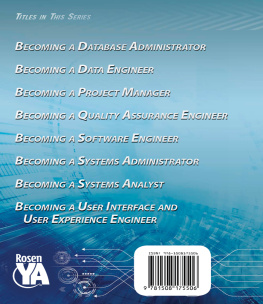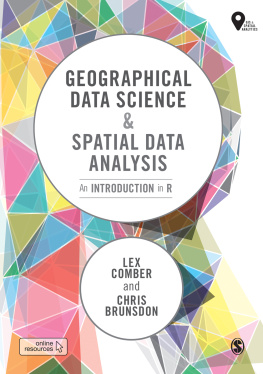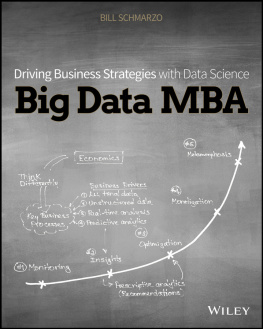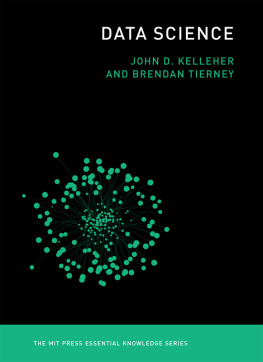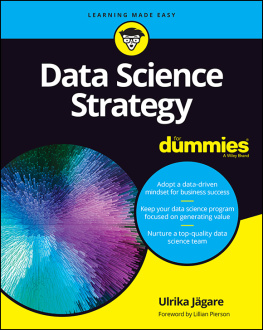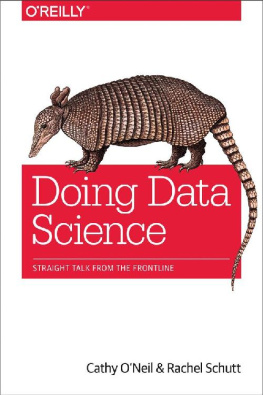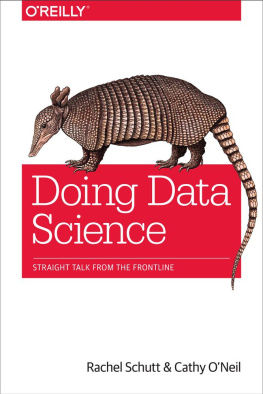Laura Igual - Introduction to Data Science
Here you can read online Laura Igual - Introduction to Data Science full text of the book (entire story) in english for free. Download pdf and epub, get meaning, cover and reviews about this ebook. year: 2017, publisher: Springer, genre: Home and family. Description of the work, (preface) as well as reviews are available. Best literature library LitArk.com created for fans of good reading and offers a wide selection of genres:
Romance novel
Science fiction
Adventure
Detective
Science
History
Home and family
Prose
Art
Politics
Computer
Non-fiction
Religion
Business
Children
Humor
Choose a favorite category and find really read worthwhile books. Enjoy immersion in the world of imagination, feel the emotions of the characters or learn something new for yourself, make an fascinating discovery.
- Book:Introduction to Data Science
- Author:
- Publisher:Springer
- Genre:
- Year:2017
- Rating:4 / 5
- Favourites:Add to favourites
- Your mark:
- 80
- 1
- 2
- 3
- 4
- 5
Introduction to Data Science: summary, description and annotation
We offer to read an annotation, description, summary or preface (depends on what the author of the book "Introduction to Data Science" wrote himself). If you haven't found the necessary information about the book — write in the comments, we will try to find it.
Introduction to Data Science — read online for free the complete book (whole text) full work
Below is the text of the book, divided by pages. System saving the place of the last page read, allows you to conveniently read the book "Introduction to Data Science" online for free, without having to search again every time where you left off. Put a bookmark, and you can go to the page where you finished reading at any time.
Font size:
Interval:
Bookmark:
- Probing reality . Data can be gathered by passive or by active methods. In the latter case, data represents the response of the world to our actions. Analysis of those responses can be extremely valuable when it comes to taking decisions about our subsequent actions. One of the best examples of this strategy is the use of A/B testing for web development: What is the best button size and color? The best answer can only be found by probing the world.
- Pattern discovery . Divide and conquer is an old heuristic used to solve complex problems; but it is not always easy to decide how to apply this common sense to problems. Datified problems can be analyzed automatically to discover useful patterns and natural clusters that can greatly simplify their solutions. The use of this technique to profile users is a critical ingredient today in such important fields as programmatic advertising or digital marketing.
- Predicting future events . Since the early days of statistics, one of the most important scientific questions has been how to build robust data models that are capable of predicting future data samples. Predictive analytics allows decisions to be taken in response to future events, not only reactively. Of course, it is not possible to predict the future in any environment and there will always be unpredictable events; but the identification of predictable events represents valuable knowledge. For example, predictive analytics can be used to optimize the tasks planned for retail store staff during the following week, by analyzing data such as weather, historic sales, traffic conditions, etc.
- Understanding people and the world . This is an objective that at the moment is beyond the scope of most companies and people, but large companies and governments are investing considerable amounts of money in research areas such as understanding natural language, computer vision, psychology and neuroscience. Scientific understanding of these areas is important for data science because in the end, in order to take optimal decisions, it is necessary to know the real processes that drive peoples decisions and behavior. The development of deep learning methods for natural language understanding and for visual object recognition is a good example of this kind of research.
- Data science is a complex, multifaceted field that can be approached from several points of view: ethics, methodology, business models, how to deal with big data, data engineering, data governance, etc. Each point of view deserves a long and interesting discussion, but the approach adopted in this book focuses on analytical techniques, because such techniques constitute the core toolbox of every data scientist and because they are the key ingredient in predicting future events, discovering useful patterns, and probing the world.
Font size:
Interval:
Bookmark:
Similar books «Introduction to Data Science»
Look at similar books to Introduction to Data Science. We have selected literature similar in name and meaning in the hope of providing readers with more options to find new, interesting, not yet read works.
Discussion, reviews of the book Introduction to Data Science and just readers' own opinions. Leave your comments, write what you think about the work, its meaning or the main characters. Specify what exactly you liked and what you didn't like, and why you think so.


